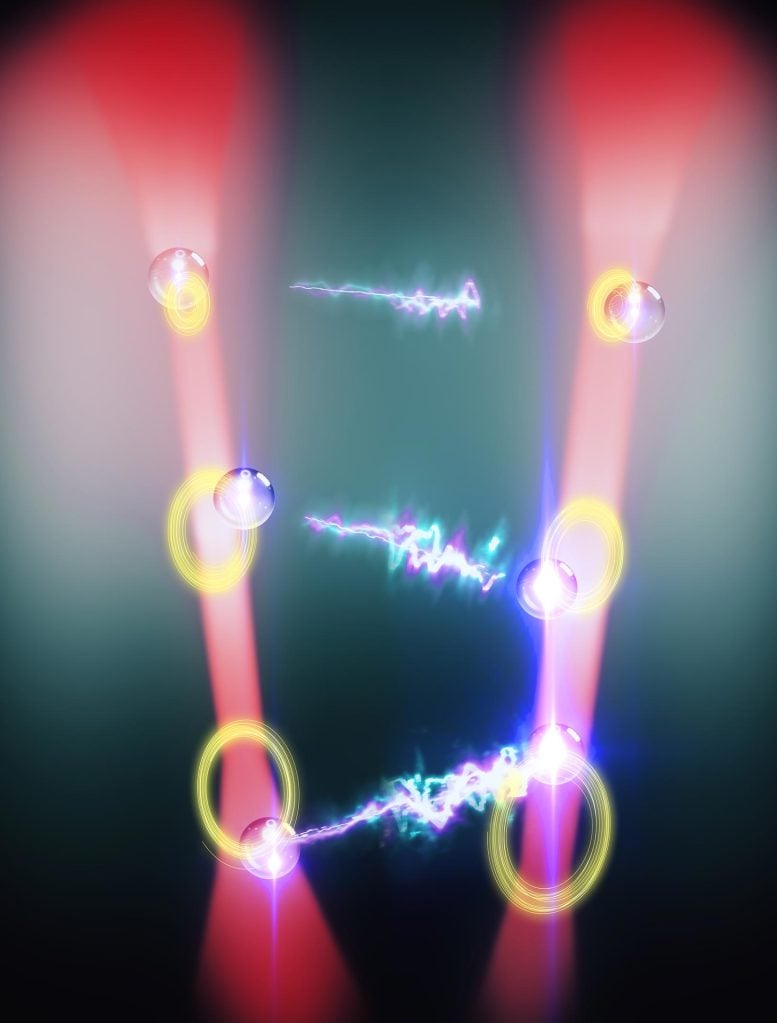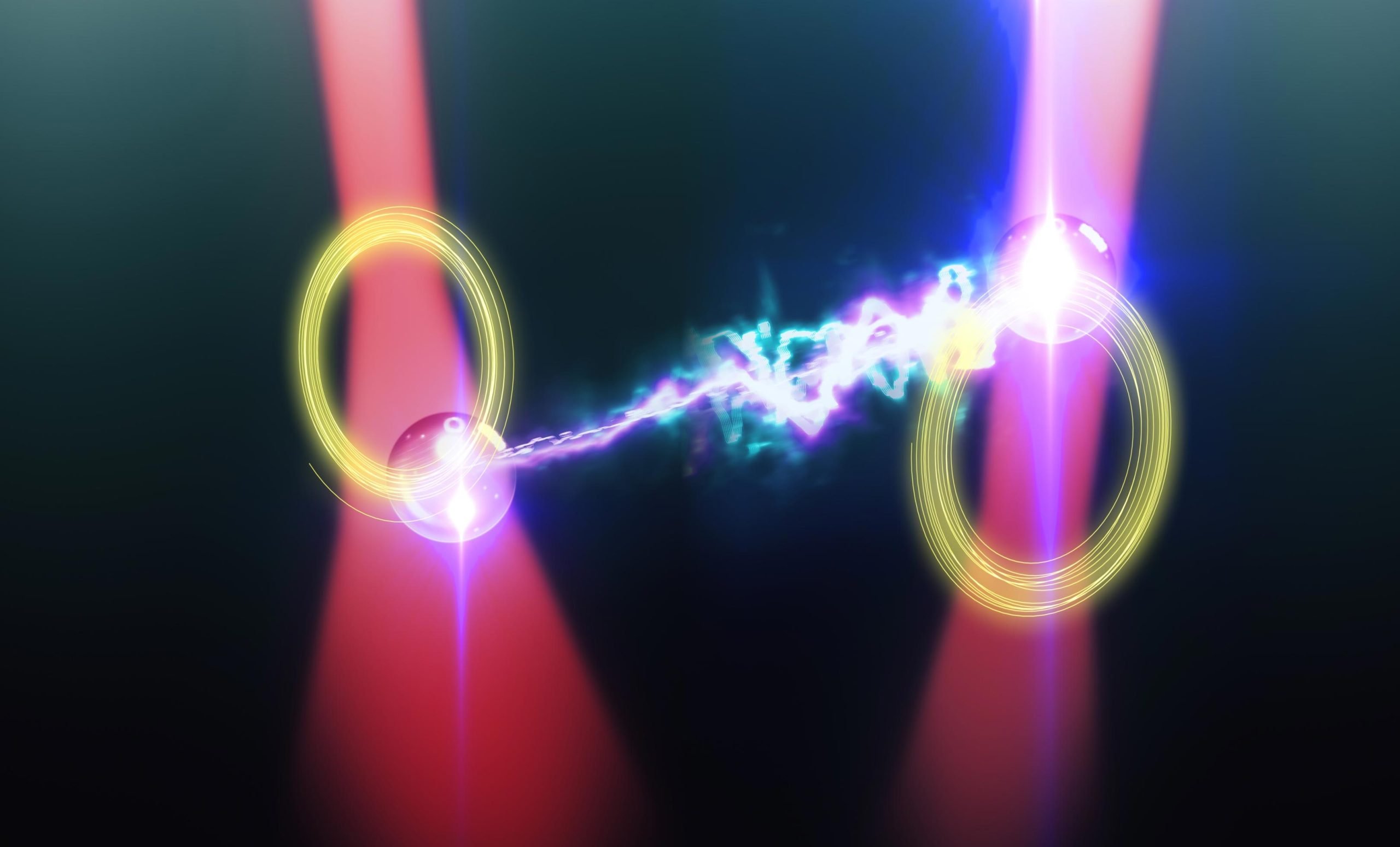Scientific illustration of the experiment where two particles in two laser beams are coupled nonreciprocally through light scattered between them. This interaction makes them move along specific orbits such that the particles follow each other (the yellow circles are the experimental records of the motion of each particle). Credit: Equinox Graphics
Predator-Prey Analogy: Novel Interaction Between Particles Enabled
Using two optically trapped glass nanoparticles, researchers observed a novel collective Non-Hermitian and nonlinear dynamic driven by nonreciprocal interactions. This contribution expands traditional optical levitation with tweezer arrays by incorporating the so-called non-conservative interactions. Their findings, supported by an analytical model developed by collaborators from Ulm University and the University of Duisburg-Essen, were recently published in 
Scientific illustration of the experiment where two particles in two laser beams are coupled nonreciprocally through light scattered between them. This interaction makes them move along specific orbits such that the particles follow each other (the yellow circles are the experimental records of the motion of each particle). Credit: Equinox Graphics
Tuning Laser Beam Phases
In this study, the researchers tuned the laser beam phases and the distance between the particles in order to control the interactions. “What I like most about this is that we control the physical model with a computer, as simple as programming a computer game,” says Manuel Reisenbauer, the PhD researcher in the team.
As a result, they produced constructive interference around one particle and destructive interference around the other. This created a positive feedback loop resembling a chase-runaway dynamic.
“A small displacement of one particle forces the other into motion, which in turn exerts an even stronger force,” explains Uroš Delić, lead author of the paper.
The team described the particles’ motion in their respective tweezers without interaction as analogous to a swing. When anti-reciprocal interactions were applied, the “swings” began to follow each other, breaking parity-time reversal symmetry. The simplest way to see it is simply to play the “film” backward: using the predator-prey analogy, the particles appear to reverse roles.
Amplified Amplitude
The positive feedback loop from anti-reciprocal interaction also amplified the swing amplitudes of both particles. When the interaction became stronger than the friction, the particles swung continuously, maintaining a constant oscillation amplitude, demonstrating nonlinear dynamics.
“This system is special because it features nonreciprocal and nonlinear forces, similar to many natural examples,” says Benjamin Stickler from Ulm University, the lead theorist on the work. “The dynamics resulted in a limit cycle phase, where particle motions resemble swings rotating fully around the top beam while still following each other.”
The limit cycle solution is a general concept found in many disciplines, including laser physics, drawing analogies between nanomechanical motion and laser dynamics.
Limit Cycle Phase and Applications
“We were impressed by the good agreement between the theoretical model and experimental data,” says Uroš Delić. “This suggests our system is ideal for observing even richer collective nonreciprocal dynamics when trapping larger ensembles of beads.”
The authors believe nonreciprocal forces will have numerous applications in force and torque sensing. Additionally, combining these results with methods for bringing trapped bead motion to the quantum regime could open new research into nonreciprocally interacting quantum few-body systems.
Reference: “Non-Hermitian dynamics and non-reciprocity of optically coupled nanoparticles” by Manuel Reisenbauer, Henning Rudolph, Livia Egyed, Klaus Hornberger, Anton V. Zasedatelev, Murad Abuzarli, Benjamin A. Stickler and Uroš Delić, 25 July 2024, Nature Physics.
DOI: 10.1038/s41567-024-02589-8














/https://tf-cmsv2-smithsonianmag-media.s3.amazonaws.com/filer_public/d1/82/d18228f6-d319-4525-bb18-78b829f0791f/mammalevolution_web.jpg)





Discussion about this post